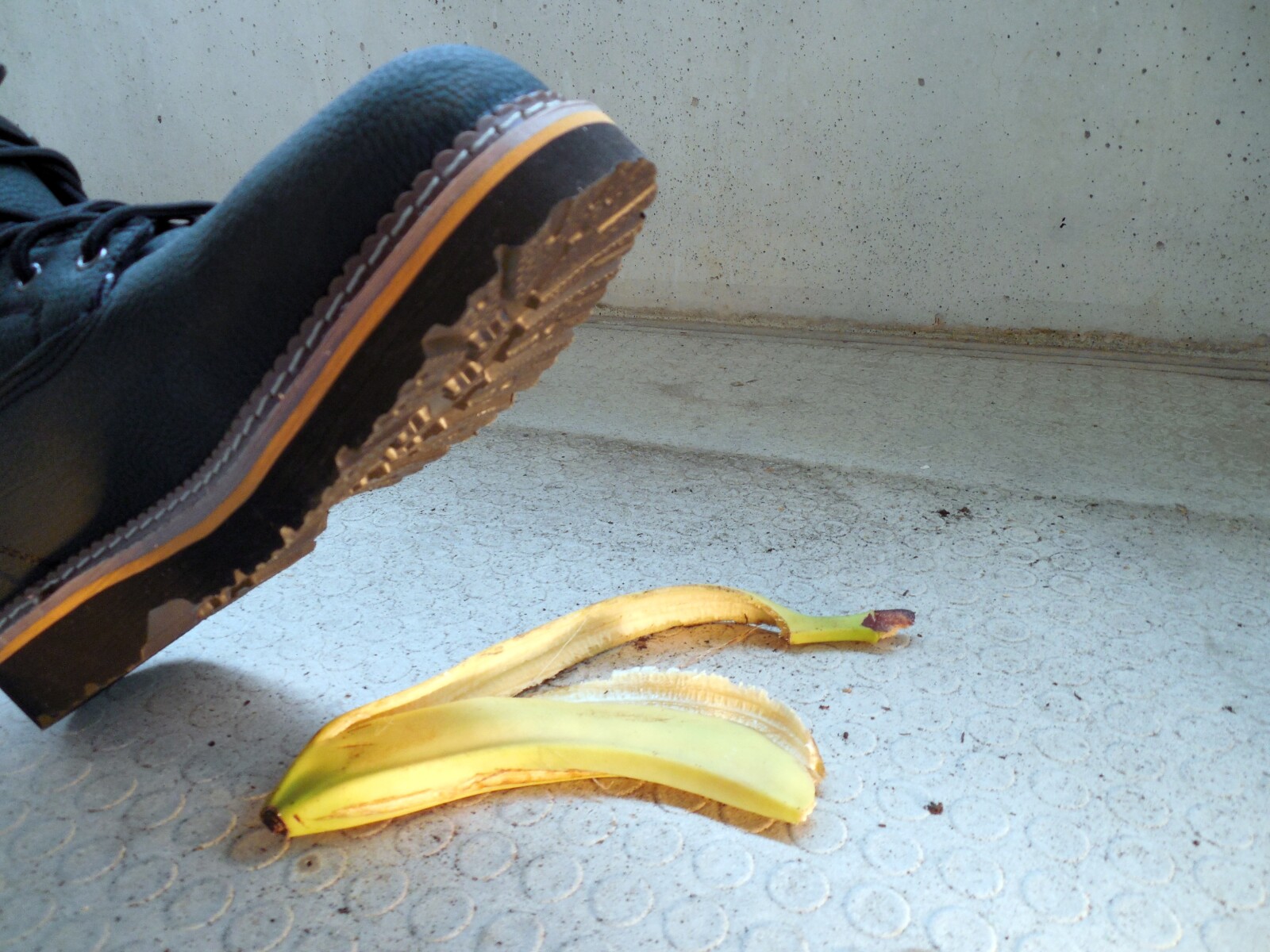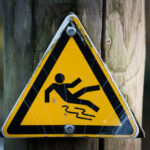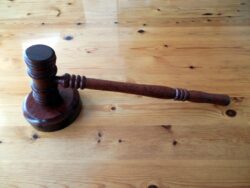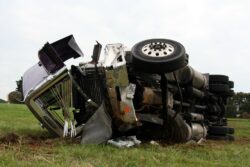9 Tips to Boost Your Slip and Fall Settlement and Get a Higher Payout
In the labyrinth of personal injury claims, navigating towards a higher slip and fall settlement can be complex. This article elucidates nine strategic steps, from evidence gathering to attorney evaluation, that can potentially enhance the value of a claim.

It offers insights into understanding economic and non-economic losses, preparing negotiation strategies, and handling pre-existing conditions, thereby providing a comprehensive guide to augmenting settlement payouts.
Key Takeaways
- Gather all evidence of economic losses
- Validate your non-economic losses
- Calculate your slip and fall settlement
- Organize your evidence and paperwork
Gathering Essential Evidence
Accumulation of pertinent evidence, such as medical records, bills, receipts for out-of-pocket expenses, proof of missed work due to medical necessity, and documentation of property damage, plays a critical role in enhancing the potential payout in a slip and fall settlement case.
Understanding medical records is imperative as they provide a comprehensive depiction of the injuries sustained, treatments administered, and the corresponding costs.
The importance of receipts cannot be overstated, as they substantiate the financial impact of the incident. These documents validate the economic losses incurred, thus justifying the need for adequate compensation.
Additionally, evidence of missed work adds credibility to the claim, demonstrating the tangible consequences of the accident.
Thorough documentation of evidence is, therefore, a crucial first step in boosting a slip and fall settlement.
Understanding Economic Losses
Understanding economic losses involves the comprehensive evaluation of all monetary impacts resulting from the incident. This can include medical expenses, lost wages, and other out-of-pocket costs. The understanding of economic damages is crucial in accurately assessing the financial impact on the victim.
The process requires meticulous record-keeping, including medical bills, receipts for expenses incurred due to the incident, and documentation of work missed. Evaluating financial losses also extends to property damage, if applicable.
It is imperative that all economic losses are substantiated with credible evidence to ensure a fair settlement. This means gathering and presenting all relevant documentation to support the claimed losses.
Ultimately, understanding economic damages not only encompasses quantifiable losses but also includes the potential future economic impact. This can include ongoing medical treatment or diminished earning capacity. Taking into account these potential future losses is important in accurately assessing the overall economic impact of the incident.
Validating Non-economic Losses
Validation of non-economic losses is a critical component of a comprehensive claim, detailing the emotional and psychological impacts that have resulted from the incident. This validation process requires a thorough and systematic approach.
- Describing Pain and Suffering: The claim should adequately convey the physical discomfort or emotional distress experienced post-incident.
- Explaining Emotional Toll: The claimant should elaborate on the psychological impact, such as anxiety, depression, or stress disorders.
- Providing Examples of Impact on Daily Activities: Illustrations of how the injury has disrupted routine tasks or hobbies can be compelling evidence of non-economic loss.
- Including Limitations or Restrictions: Any long-term effects or limitations resulting from the incident should be meticulously documented.
In the end, a well-substantiated validation of non-economic losses can significantly enhance the overall claim.
Calculating Your Settlement Value
Estimation of the settlement value encompasses the summation of all economic damages, full cost of medical treatment, verification of lost wages, reimbursement for out-of-pocket expenses, and the projection of non-economic damages for pain and suffering. Determining the total value requires a careful and thorough analysis of all components.
| Settlement Component | Method of Calculation |
|---|---|
| Economic Damages | Sum of all quantifiable losses |
| Cost of Medical Treatment | Total medical bills |
| Lost Wages | Verification from employer |
| Out-of-Pocket Expenses | Receipts and invoices |
| Pain and Suffering | Based on severity of injuries |
In slip and fall settlements, accounting for lost wages and calculating the value of pain and suffering are crucial to obtaining a fair settlement. By meticulously documenting all damages, claimants can ensure they receive the compensation they rightfully deserve.
Organizing Your Documentation
Efficient organization of all necessary evidence and correspondence significantly contributes to the smooth progression of a slip and fall claim. The importance of thorough documentation cannot be overstated. It serves as the backbone of the claim, supporting allegations and justifying demands.
- Segregation of medical bills and treatment records by date aids in chronological representation of events.
- Maintenance of a distinct section for correspondence ensures easy retrieval of communication history.
- Explanation of treatment delays or breaks prevents potential misconceptions.
- Regular upkeep of claim file accentuates professionalism and seriousness of the claim.
These steps not only make the entire process streamlined and manageable but also play a vital role in maximizing compensation. A meticulously organized and well-documented claim is more likely to yield an optimal settlement.
Developing a Strong Negotiating Strategy
Transitioning from the meticulous process of organizing documentation, the focus now shifts to developing a strong negotiating strategy. Fundamental to this strategy is building rapport with the insurance adjuster and leveraging expert testimony. Building rapport entails consistent communication characterized by respect and professionalism, which fosters a conducive negotiation environment. On the other hand, leveraging expert testimony provides an authoritative backing to claims, thereby enhancing their credibility. Expert testimony can significantly influence the adjuster's perception of the claim's validity, potentially leading to a favorable settlement.
| Strategy | Importance | Implementation |
|---|---|---|
| Building Rapport | Encourages open communication | Maintain professionalism and respect |
| Leveraging Expert Testimony | Enhances claim credibility | Seek authoritative backing of claims |
| Negotiation | Crucial for a favorable settlement | Develop and adhere to a calculated plan |
This negotiation strategy, when effectively executed, can potentially boost slip and fall settlement payouts.
Proving Your Innocence
Proving one's innocence in a slip and fall case requires the meticulous gathering and presentation of evidence that demonstrates the other party's negligence. This process is critical in establishing fault and preparing a robust defense strategy.
- Evidence Collection: Documentation of the incident, photographs, witness statements, and any prior complaints about the hazard provide substantial evidence of negligence.
- Establishing Fault: Drawing a direct link between the defendant's negligence and the plaintiff's injury is necessary.
- Reasonable Care: Demonstrating that the plaintiff was exercising due caution at the time of the incident helps in validating their innocence.
- Defense Strategy: A well-prepared defense strategy, articulating the plaintiff's innocence and the defendant's negligence, is fundamental in proving innocence.
This process, while challenging, can significantly strengthen the claimant's position in a slip and fall case.
Handling Pre-existing Conditions
Handling pre-existing conditions in a slip and fall case necessitates clear disclosure and detailed medical documentation to demonstrate how the incident exacerbated the condition. Insurance coverage for slip and fall accidents may be influenced by the presence of such conditions, hence the importance of thorough documentation and transparency.
The table below outlines the necessary steps in handling pre-existing conditions:
| Steps | Description | Importance |
|---|---|---|
| Disclosure | Revealing the existence of a pre-existing condition | Ensures fairness and honesty in the claim process |
| Documentation | Providing medical records that show the condition's progression post-accident | Establishes a link between the incident and the exacerbation of the condition |
| Insurance coverage | Understanding and navigating the insurance process | Maximizes the potential compensation from the claim |
This approach ensures a comprehensive and fair evaluation of the claim, potentially enhancing the settlement value.
Considering an Attorney Evaluation
After meticulous handling of pre-existing conditions, the focus shifts to the importance of considering an attorney evaluation. This option entails weighing the pros and cons of hiring an attorney, and is an essential step before pursuing legal action.
- Pros and Cons of Hiring an Attorney: It is crucial to understand that while an attorney can provide professional guidance and enhance the chances of getting a higher settlement, their fees could significantly reduce the net payout.
- Factors to Consider: These include the complexity of the case, potential claim value, and the necessary expertise to negotiate with insurance adjusters.
- Professional Case Evaluation: An attorney can expertly evaluate the case, providing an understanding of its potential value.
- Informed Decision: With this knowledge, a more informed decision can be made about pursuing legal action.
Frequently Asked Questions
What Should I Do Immediately After a Slip and Fall Accident to Protect My Potential Claim?
Immediately post-incident, initiate evidence collection to substantiate the potential claim. This includes photographing the accident scene, gathering witness information, and retaining any relevant documentation.
Concurrently, seek immediate medical treatment to establish a medical record of the incident.
These actions are essential in protecting potential claims, ensuring accurate representation of the incident, and enabling the calculation of subsequent compensation.
How Can I Determine the Level of Negligence of the Other Party in My Slip and Fall Accident?
Determining the level of negligence in a slip and fall accident involves a comprehensive negligence assessment. This process requires meticulous evidence collection, including:
- Photographs of the accident scene
- Witness statements
- Any prior complaints about the hazardous condition
The presence of safety hazards or ignored maintenance issues can demonstrate the other party's negligence. Moreover, showing that reasonable care was exercised by the injured party further strengthens the negligence claim.
Are There Any Special Considerations or Steps to Take When Dealing With Insurance Companies in a Slip and Fall Claim?
In dealing with insurance companies in slip and fall claims, the importance of claim documentation cannot be overstated. Accurate, detailed reports strengthen the claim's validity, supporting settlement negotiation tactics.
Thoroughly organized medical records, bills, and evidence of negligence are crucial. Additionally, adopting a professional approach during negotiations, being prepared to counter challenges, and not hastily agreeing with the adjuster's evaluations significantly enhance the possibility of a higher payout.
What Factors Can Negatively Affect the Value of My Slip and Fall Settlement?
Factors that can negatively impact the value of a slip and fall settlement include:
- Insufficient liability proof
- Lack of credible witness statements
- Failure to promptly seek medical attention after the accident
Other detrimental factors may include:
- A pre-existing condition that complicates the injury claim
- Inconsistent statements that question the victim's credibility
A settlement reduction may occur if these factors are present, underscoring the importance of diligent claim management.
When Is the Best Time to Settle a Slip and Fall Accident Claim?
The optimal time to settle a slip and fall accident claim depends on several factors. Settlement timing is crucial; it is often advisable to wait until the full extent of injuries and total costs are known. However, claim deadlines must also be considered.
Statutes of limitations impose time constraints on filing claims. Thus, a balance must be achieved between obtaining a comprehensive understanding of injury-related costs and adhering to legal deadlines.

This post has been generated by AI and was not reviewed by editors. This is Not legal advice. Please consult with an attorney.




